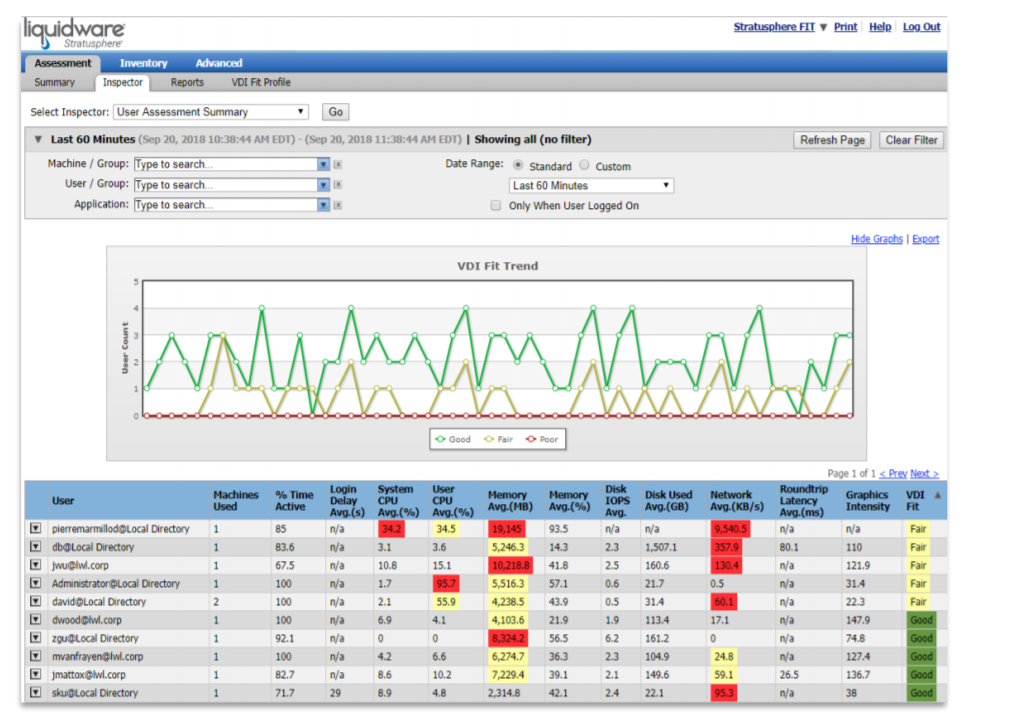A common challenge in designing a new Digital Workspace is calculating how many compute resources you need. I worked on different projects where the customer bought the hardware and the licenses before we started the design phase. It’s like buying a car and not knowing how many people you’ll have to drive around, or if it will be used for work. This adds big constraints and risks to the design before you start.
Constraints
- The new hardware is bought without running an assessment
- The new licenses were bought without determining the possible use cases
Risks
- The hardware might not offer enough compute to host the VDI workloads
- The new licenses might not be adequate to cover all the possible use cases
- The new licenses might limit the possible solutions
These constraints and risks can be easily avoided if you run an assessment as part of the design phase.
Measuring is knowing. As a result, the measurements will help you significantly in calculating the compute resources for your project. These metrics are not sufficient. You have to take into account; scaling, disaster recovery, RTO and RPO…
How can I perform an assessment of my environment?
There are many software solutions that can help assess your environment and provide insights. One of my favorite tools is Liquidware Stratusphere FIT.
How long do I have to run an assessment?
I recommend running an assessment for at least 60 days. Because some workloads only happen once a month. For example monthly accounting reports. If you run the assessment for only 2 weeks that data could be missed.
Liquidware Stratusphere FIT
I have used Liquidware Stratusphere Fit several times in different projects. It’s easy to install because it’s a virtual appliance. On your endpoints, you deploy an agent that will capture different metrics and sent it to the appliance. The agent has a very low footprint and you can determine how often the data is sent to the Liquidware Stratusphere Fit virtual appliance. If a device is off the network the data will still be collected and sent when it connects back to the network.

Web-based
Another great advantage is that you can centrally manage your endpoints and consult your data through a web-based console. So it’s very flexible, you can run and consult reports from any device. You only need a webbrowser.
Custom groups
You can integrate the virtual appliance with Microsoft Active Directory and create groups based on AD users, OU’s…. You can also create your own groups based on computer names or on a custom metric like the amount of RAM with a CSV file. If you have your groups and collected data for a few weeks you can create reports from the collected data. You can create reports based on all the endpoints or your own groups.
Built-in reports

Liquidware Stratusphere Fit has many great built-in reports. Below are the ones I use the most and contain a lot of helpful information.
- Report 103 Application Assessment Summary:
This report will provide great insight into all the applications that are installed on the endpoints. - Report 104 Applications installed Vs Used Summary:
Provides a clear overview of which applications are used the most vs installed - Report 112 Assessment Findings:
This report contains all the assessment findings like average consumed resources, top 1o used applications, login times, peak hours, OS overview… This is one of the best reports! - Report 114 VMware Horizon View Capacity and Performance Estimate:
Provides a great average overview of the consumed resources: CPU, RAM, IOPS, Network traffic…

Conclusion
I hope this blog convinced you to always run an assessment and create a design before you buy new hardware or licenses for your new VDI environment. Measuring is knowing! Liquidware Stratusphere can also be licensed with much more in-depth User Experience reports, this is known as Stratusphere UX. Stratusphere UX is very helpful to monitor your ongoing workspace environment and User Experience! In this manner, the solution leveraged to find the root cause of downward user experience trends through intuitive diagnostics. The virtual appliance can be deployed on VMware vSphere, Citrix Xenserver, Microsoft Hyper-V, Azure, and even Amazon Webservices. If you want to learn more about Liquidware Stratuspere FIT click here.
The original article was posted on: maartencaus.be




